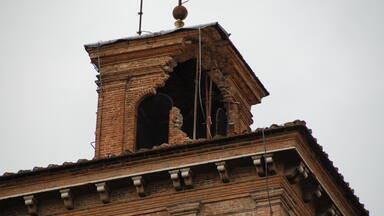UNESCO mission assesses earthquake damage to sites in northern Italy
As requested by Director-General Irina Bokova, a team of experts has traveled to northern Italy to assess damage to World Heritage sites following recent earthquakes.
On 20 May 2012 a powerful earthquake hit the region of Emilia Romagna, in the north of Italy, followed by numerous aftershocks. This caused considerable damage to several important historic buildings. The three World Heritage properties located in the affected region, i.e. Mantua and Sabbioneta; the Cathedral, Torre Civica and Piazza Grande, Modena; and Ferrara, City of the Renaissance, and its Po Delta, were moderately impacted by this first quake, according to initial reports.
On 29 May, a new earthquake hit the same region. The impact of this second quake on the cultural heritage of the area has been dramatic, according to the Secretary General of the Italian Ministry of Cultural Properties and Activities. Daily aftershocks continue in the area.
The mission, to be carried out on 7 and 8 June, is assessing the situation at the sites and collecting information on the seismic phenomena and its implications for possible measures to prevent further damage to the cultural heritage. The experts will also meet the responsible authorities to discuss protective measures and possible strategies for rehabilitation and risk mitigation.
Ferrara, City of the Renaissance, and its Po Delta was inscribed on the World Heritage List in 1995 as an outstanding example of a planned Renaissance city, which has retained its urban fabric virtually intact. Mantua and Sabbioneta, inscribed in 2008, offer exceptional testimonies of the architectural and artistic achievements of the Italian Renaissance. Cathedral, Torre Civica and Piazza Grande, Modena, inscribed in 1997, is a supreme example of early Romanesque art.

